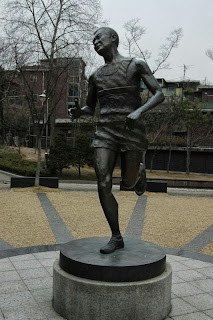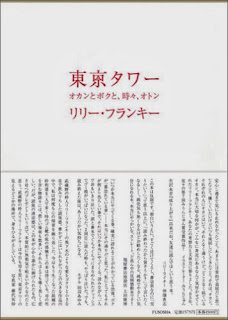Amelia Earhart was a world famous American aviatrix whose courageous exploits and plucky personality made her an international hero and an American cultural icon in the early half of the 20th Century.
Earhart was the first woman to cross the Atlantic ocean by airplane (1928), the second person and first woman to fly solo across the Atlantic (1932), the first person to fly solo across the Pacific between California and Hawaii (1935), and the first woman to compete in the National Air Races in Cleveland, Ohio (1935). She also set a number of speed and altitude records and was awarded numerous high level honors and awards from American and Foreign dignitaries.
On July 2, 1937, Earhart and navigator Fred Noonan disappeared over the Pacific Ocean during one of the final legs of their equatorial round the world flight. Had they finished the crossing Earhart would have been only the second person to complete such a journey and the first woman ever to do so.
The mystery of Earhart's disappearance continues to intrigue the public and to generate scores of books, articles, and films. Popular theories for her disappearance include navigational error, capture by the Japanese military, and even UFO abduction. Earhart herself authored two books, 20 Hrs. 40 Min (1928) and For the Fun of It (1932). Selections from her journal, mailed to husband George Putnam during her final flight, were posthumously published as a third book, Last Flight, in 1937.
Throughout her life Earhart worked tirelessly to promote aviation and opportunities for women. Amelia Mary Earhart was born July 24, 1897 in Atchison Kansas. Her early years were spent, primarily, with her maternal grandparents who were prominent local citizens. But in 1908 Amelia and her sister Muriel went to live full time with their parents, Edwin and Amy. It was the beginning of a time of hardships and turmoil.Her father's unstable career meant frequent moves. Economic woes fueled marital strife -- and her father's alcoholism -- and her parents separated frequently. Amelia meanwhile resented the stress foisted on her father as the family’s sole provider. Already a tomboy, she resolved that she would be a more independent style of woman, one who would be an equal partner.
Theory of disappearance
The mysterious fate of the larger than life woman flyer tugged at the public's consciousness. For nearly a decade she had amazed and delighted the world by doing the seemingly impossible, by doing what others could not. She was plucky, resourceful, and smart. Could this extraordinary American hero really have fallen prey to error or the forces of nature? To many it seemed unlikely. Surely she was simply marooned somewhere, waiting to be discovered.
But another hypothesis was already in the making.
On October 16, 1937 the Australian newspaper, Smith's Weekly, charged that U.S. planes, allegedly searching for Earhart, were in fact carrying out reconnaissance of Japanese military installations in the Pacific. The expansionist Japanese empire had been very busy of late in certain parts of the South Pacific, shipping in great quantities of building materials, and enough food to support an army. Given that the Japanese had already begun an invasion of China, U.S. officials had to be nervous about Japan's intentions toward American interests in the Pacific. At the same time the search for a world renowned flyer, a beloved public icon, could have provided convenient cover for a massive U.S. presence close to Japanese territory.
However, according to official U.S. records, American personnel never entered Japanese held waters. Officially there was no correlation.
But in 1943, well after the Japanese attack on Pearl Harbor, rumors of a connection between the Earhart disappearance and the Japanese menace gained new life. In the film Flight for Freedom, Rosalind Russell portrayed a woman aviator closely modeled on the life and personality of Amelia Earhart. She even sported a version of Earhart's nickname, "Lady Lindbergh." And like Earhart, this lady aviator also lost her life in the Pacific -- but on a secret government spy mission against the Japanese. The message was not lost on the public and in the decades since the movies debut theories linking Earhart's disappearance to the Japanese military have multiplied. Even some U.S. servicemen in the World War II Pacific theater returned home with claims of having found Earhart, her remains, or her affects in Japanese hands.
 Earhart researchers favoring the Japanese interception theory later leaped on these accounts as well of those of South Pacific natives who claimed to have seen Earhart in custody. But accounts about Earhart varied wildly -- she was executed immediately, she died of illness, she was liberated from a prison camp, she was secretly repatriated to the United States, she was really Tokyo Rose, etc. But the majority of seemingly credible accounts do seem to place her on the island of Saipan, as Japanese prisoner charged with espionage. Was it truth or film related hysteria?
Earhart researchers favoring the Japanese interception theory later leaped on these accounts as well of those of South Pacific natives who claimed to have seen Earhart in custody. But accounts about Earhart varied wildly -- she was executed immediately, she died of illness, she was liberated from a prison camp, she was secretly repatriated to the United States, she was really Tokyo Rose, etc. But the majority of seemingly credible accounts do seem to place her on the island of Saipan, as Japanese prisoner charged with espionage. Was it truth or film related hysteria?
In 1949 Amy Earhart publicly stated that she believed her daughter had been involved in some kind of work for the government. There are even claims that Navy Admiral Chester W. Nimitz shared this view. However thus far no hard evidence has been presented to prove either that Earhart was engaged in reconnaissance or that she was ever in Japanese custody.
The more commonly accepted theory today, in an era when Earhart's accomplishments no longer loom larger than life, is that she simply ran out of gas and crashed into the Pacific. The plane immediately sank, proponents say, and she and Noonan were drowned. Nothing extraordinary about it. But one group of researchers, TIGHAR (The International Group for Historic Aircraft Recovery), validate the old vision of Earhart, and Noonan, as unusually capable and resourceful.
They insist that the flyers managed to land their craft on the reef of tiny Gardner Island in the Phoenix Group in the South Pacific. On this island, now Nikumaroro in the Republic of Kirib, they struggled to stay alive, waiting for a rescue that never came.
TIGHAR researchers cite as evidence for this theory human remains and airplane wreckage which were both alleged found on the island in decades past. The group’s examination of the site, involving trained experts in forensics and archaeological excavation, has uncovered tantalizing clues that seem to lend credence to the earlier reports. Did the remains, and the possible airplane, belong to Earhart? They aren't sure, yet.
Meanwhile the results of TIGHAR's work appear in Finding Amelia: The True Story of the Earhart Disappearance (2006) by TIGHAR Executive Director Ric Gillespie.Tom King’s Amelia Earhart's Shoes: Is the Mystery Solved? also incorporates the findings. TIGHAR members hope that future expeditions to Nikumaroro will decisively answer the riddle of Earhart's disappearance. Other Earhart theorists however believe that only a similar expedition to the jungles of Saipan will provide the answers.
The mystery of what happened to Earhart, Noonan, and the plane has not yet been solved. In 1999, British archaeologists claimed to have found artifacts on a small island in the South Pacific that contained Earhart’s DNA, but the evidence is not conclusive. Near the plane’s last known location, the ocean reaches depths of 16,000 feet, well below the range of today’s deep-sea diving equipment. If the plane sank into those depths, it may never be recovered.





.jpg)










